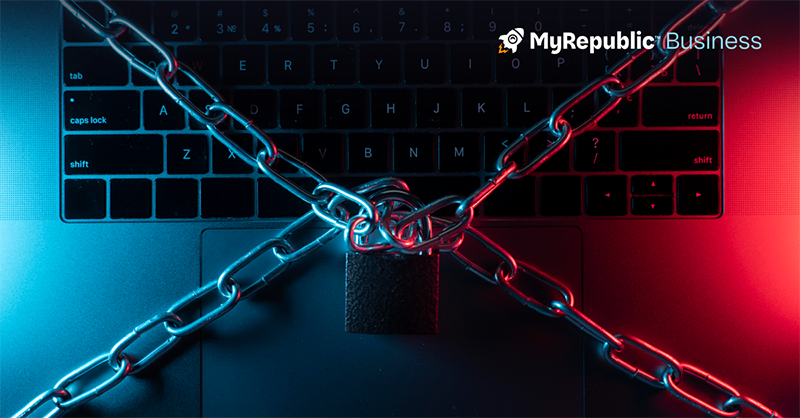What To Do If Your Business Is Under A Cyberattack

The question of a cyberattack is not one of “If”, but “When”. Over a long enough timespan, most organisations will catch the attention of cybercriminals and become the target of a cybersecurity breach. The key is to recognise what to do when it does happen and have the necessary steps put into place to respond to the threat immediately.
Don’t have an Incident Response Plan (IRP) in place? Here are some simple measures to implement when you find your business face-to-face with a cyberattack.
1. Identify The Type Of Threat
The first step in this immediate action plan is for businesses to identify and understand the nature of the attack and its extent. Only with that knowledge will businesses be able to implement the correct and effective measures in place to mitigate and remedy its effects. However, aside from just identifying, business owners should also verify and document the severity of the damage as much as possible. This information will be crucial down the road when it comes to restoring and recovering the data.
If your business requires assistance in identifying and recording the type of cyberattack, you may explore MyRepublic’s Incident Response Retainer. The MyRepublic Incident Response team can identify, analyse, record and even help to eradicate the cyberthreat, providing an all-in-one service. Furthermore, if you are worried about committing to a cybersecurity plan early on your business journey, MyRepublic’s Cyber Incident Response Retainer provides a one-time cyber incident response activation credit that can be utilised at any point in time, which is a great contingency plan for small business owners.
However, for businesses that lack the in-house capabilities to identify threats as they happen, MyRepublic’s Managed Firewall Services offers 24/7 firewall monitoring with real-time alerts to notify you of the type of attack the moment it occurs.
2. Mitigate The Impact
In the instance of a cyberattack, time is of the essence. After being alerted of a cyberattack, businesses should quickly move and lock their data and back up the existing data on hand while working on identifying the type of threat. In this digital landscape, access to data is worth its weight in gold and can be used to gain unauthorised access to other platforms. For example, in 2022 e-commerce platform Carousell was the victim of a data breach when a threat actor exploited a software vulnerability to unlawfully obtain the personal information of 46 users. In the same year, Carousell also suffered from a separate data breach that led to the personal data of 44,477 people being leaked. This series of data breaches resulted in data leaks that affected more than 2.6 million users and led to the e-commerce platform being fined S$58,000 for failure to do its due diligence.
This example demonstrates the importance of reacting promptly to cyberattacks in order to mitigate their impact. Try seeking third-party advice such as MyRepublic’s Cyber Incident Response Retainer which can help businesses quickly do so and contain and eradicate threats as they appear.
3. Recover Data and Resume Operations
Time for a sit-rep, otherwise known as a situation report. The goal here is to verify your system integrity to see what was affected. It is important to know what was compromised during the cyberattack. This could entail data loss or operations that have been denied due to the cyberattack. Immediate remediation of these issues begins with first examining your database and current capabilities, and branching out from there to see if any other systems or platforms were compromised. In the event business operations have been affected, it is crucial for organisations to fall back onto their Business Continuity Plan (BCP). This comprehensively outlines the steps that should be taken, by a business, to resume operations.
Not every business might have a BCP in place, which makes recovering data and resuming operations very tough to do, which is where expert consultants come in. MyRepublic’s Cybersecurity Consulting Services help solve complex security issues and work to help businesses keep up with constantly evolving threat landscapes so they can operate with peace of mind.
4. Review Network Vulnerability
After you’ve gone through your systems to eliminate the cyberthreat and conducted a review of internal systems, the final step is to conduct an after-action review. This entails a brutal audit of your existing security systems. Businesses need to identify how the cyberattack happened, and how the intruders managed to gain access to your system undetected. Further details to consider in the audit include platform vulnerabilities, which show if your services were potentially compromised before the attack.
This all builds towards the final action step, which is deciding if you should proceed to reinstate your servers and patch out the loopholes, or rebuild everything from scratch. In the case of Sony, they set aside a considerable sum of money to bolster their existing security infrastructure. For businesses considering which path to take, ask yourself these questions – how easy is it for me to plug all the holes in my infrastructure? Could my existing infrastructure have further vulnerabilities in the future? Can we afford to prioritise a short-term fix for now? These questions should help you answer the query of whether to push ahead with a full system overhaul.
If you are still undecided and need some expert advice, MyRepublic’s Vulnerability Management provides a comprehensive overview of your external and internal vulnerabilities through network penetration testing.
Last but not least, business owners might want to start working on their cybersecurity plan before it’s too late. Preparing ahead will help to prevent or mitigate the severity of cyberattacks. Contact us now and find out how MyRepublic Business’s full suite of cybersecurity services can get your business on a cybersecurity plan before it is too late.



















